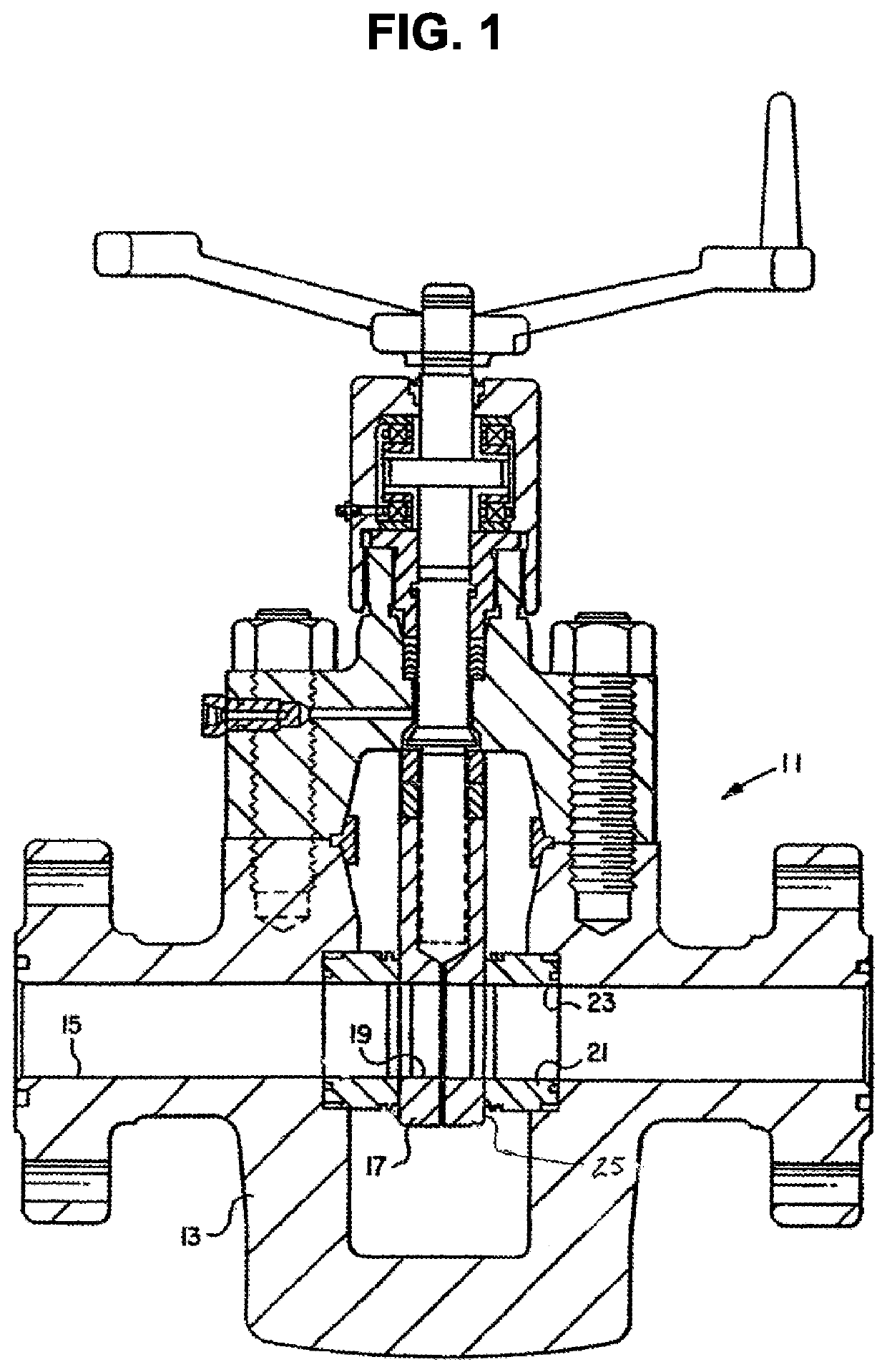High-temperature low-friction cobalt-free coating system for gate valves, ball valves, stems, and seats
a cobalt-free, high-temperature technology, applied in the direction of valve member-seat contact, engine components, metal material coating process, etc., can solve the problems of insufficient load-bearing capacity and ductility, insufficient ductility, and insufficient underlying materials. , to achieve the effect of improving the corrosion resistance and anti-fouling properties of the base coat, reducing material costs, and reducing sourcing concerns
- Summary
- Abstract
- Description
- Claims
- Application Information
AI Technical Summary
Benefits of technology
Problems solved by technology
Method used
Image
Examples
example 1
ng of P82-X6
[0134]Alloy P82-X6 was gas atomized into a powder of 53-150 μm particle size distribution as suitable for PTA and / or laser cladding. The alloy was laser clad using two parameter sets: 1) 1.8 kW laser power and 20 L / min flow rate, and 2) 2.2 kW laser power and 14 L / min flow rate. In both cases, the coating showed fine isolated niobium / titanium Carbide precipitates 401 in a Nickel matrix 402 as intended as shown in FIG. 5. The 300 grams-force Vickers hardness of the laser claddings was 435 and 348 for parameter sets 1 and 2, respectively. The ASTM G65 tests were 1.58 g lost (209 mm3) and 1.65 g (200 mm3) lost for parameters sets 1 and 2, respectively.
example 2
ying of P76-X23 and P76-X24
[0135]Alloys P76-X23 and P76-X24 were gas atomized into powders of 15-45 μm particle size distribution as suitable for HVOF thermal spray processing. Both powders forms an extremely fine scale morphology where a Nickel matrix phase and Nickel Boride phase appear to be both present as predicted via the computational modelling, but very difficult to distinguish and measure quantitatively. As shown in FIG. 6, 501 being the gas atomized powder and 502 being the resultant coating of the powder, in addition to the matrix and Ni Boride phase 504 (e.g., the eutectic Nickel / Nickel Boride structure of the gas atomized powder), the P76-X24 alloy also forms Chromium Boride precipitates 503 as predicted by the model as fine isolated particles. 505 highlights a region of primarily Nickel / Nickel Boride eutectic structure in the HVOF sprayed coating, and 506 highlights a region containing many Chromium Boride precipitates in the coating. Both alloys were HVOF sprayed to 2...
example 4
ies of P82-X13, 14, 15, 18, 19 in Comparison with Inconel 625
[0138]A weld study was conducted evaluating several alloys of differing Carbide contents and morphologies in comparison to Inconel 625. All of the alloys in the study were intended to form a matrix similar to Inconel 625, which is quantified by the matrix proximity, 100% equating to a matrix which is exactly similar to the Inconel 625 bulk composition. All the alloys were laser welded in three overlapping layers to test for crack resistance. Similarly, two layer welds of each alloy were produced via plasma transferred arc welding to test for cracking and other properties.
TABLE 1Comparison of All MicrostructuresAlloy NameGB Hard PhaseIso Hard PhaseMatrix ProximityInconel 625 0%0%100% P82-X1310.50%0%100% P82-X1420.10%0%99%P82-X1530.40%0%84%P82-X18 9.90%8.10% 98%P82-X1920.00%8.00% 98%
[0139]The P82-X18 represents an example embodiment of this disclosure producing favorable results at the conclusion of this study. P82-X18 i...
PUM
| Property | Measurement | Unit |
|---|---|---|
| Fraction | aaaaa | aaaaa |
| Fraction | aaaaa | aaaaa |
| Fraction | aaaaa | aaaaa |
Abstract
Description
Claims
Application Information
 Login to View More
Login to View More - R&D
- Intellectual Property
- Life Sciences
- Materials
- Tech Scout
- Unparalleled Data Quality
- Higher Quality Content
- 60% Fewer Hallucinations
Browse by: Latest US Patents, China's latest patents, Technical Efficacy Thesaurus, Application Domain, Technology Topic, Popular Technical Reports.
© 2025 PatSnap. All rights reserved.Legal|Privacy policy|Modern Slavery Act Transparency Statement|Sitemap|About US| Contact US: help@patsnap.com



